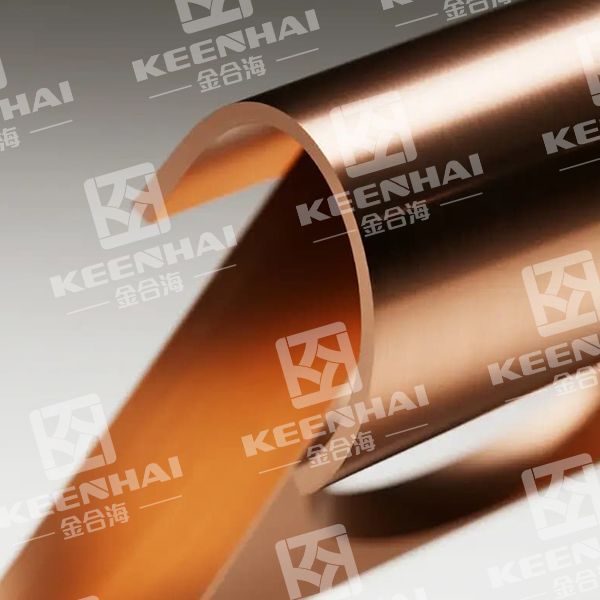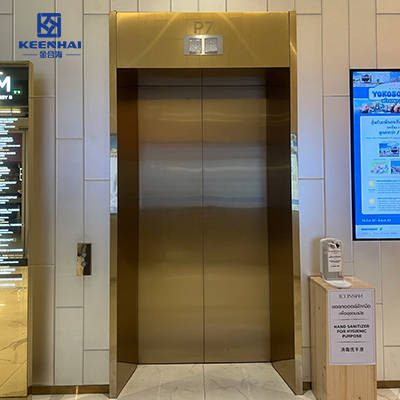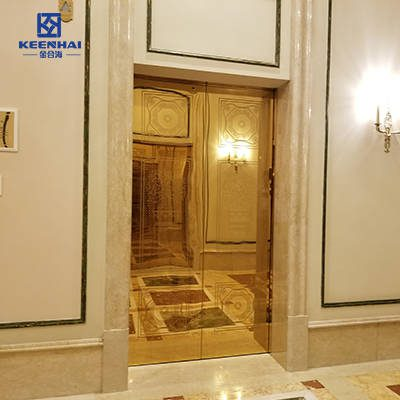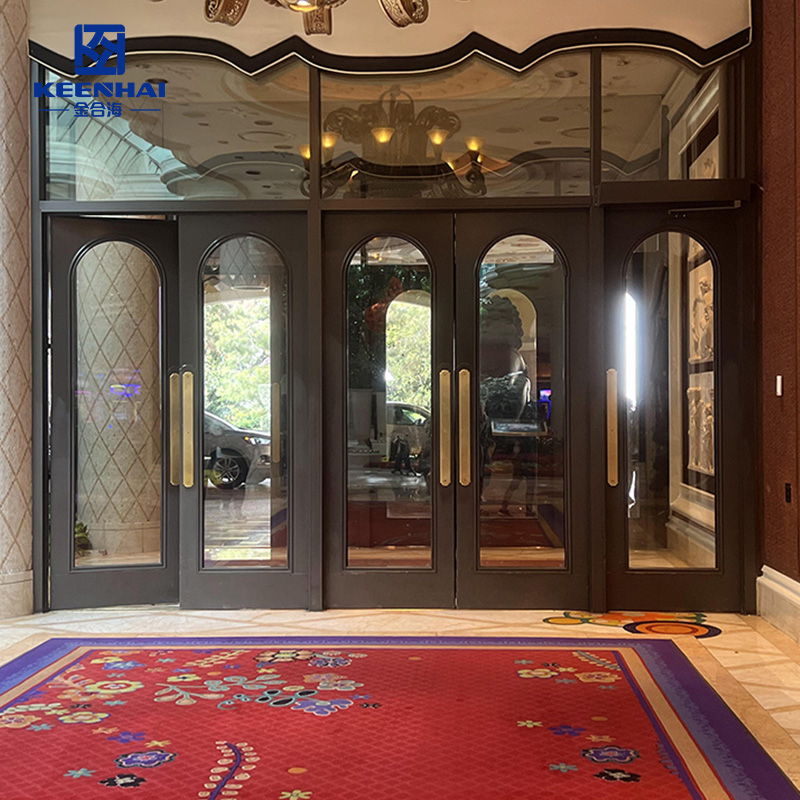Unlike traditional coatings, PVD doesn’t just sit on top — it bonds at the molecular level. This creates a tough, decorative finish that resists fading, corrosion, and daily wear. Architects and designers often choose PVD finish steel surfaces for luxury interiors, wall panels, and commercial façades where appearance and durability matter equally.
1. Understanding the Basics of PVD Coating
PVD coating, short for Physical Vapor Deposition, is a cutting-edge surface treatment used to enhance both the appearance and durability of stainless steel. In simple terms, it’s a process that deposits a thin metallic film onto the steel surface in a vacuum chamber. This technology is widely used in architectural design, luxury interiors, and modern commercial projects, where durable and decorative finishes are essential. In many modern buildings, you’ll often see colored stainless steel panels used for elevator doors, wall claddings, or signage — these are typically pvd coated stainless steel surfaces that combine performance with aesthetics.
1.1 Definition of PVD (Physical Vapor Deposition)
PVD is a physical — not chemical — process where solid materials like titanium, zirconium, or chromium are vaporized under vacuum and then condensed as a thin film on the stainless steel substrate. This coating forms a molecular-level bond, making it highly resistant to corrosion, oxidation, and scratches.
The main advantage of PVD technology lies in its eco-friendly and non-toxic nature. Unlike traditional electroplating, it doesn’t involve hazardous chemicals or produce heavy metal waste. For designers and manufacturers seeking sustainable finishes, PVD finish steel surfaces offer a green alternative without sacrificing performance.
Here’s a quick comparison between PVD coating och electroplating to show the difference more clearly:
| Särdrag | PVD Coating | Electroplating |
|---|---|---|
| Process Type | Physical vapor deposition in vacuum | Chemical immersion using metal ions |
| Varaktighet | Extremely high | Moderate |
| Environmental Impact | Non-toxic, no chemical waste | Produces heavy metal waste |
| Color Range | Wide (gold, bronze, black, rose, etc.) | Limited |
| Bond Strength | Molecular-level adhesion | Surface-level coating |
1.2 How PVD Coating Works on Stainless Steel Surfaces
The PVD process involves several precisely controlled stages that ensure the coating is uniform, dense, and long-lasting:
-
Surface Preparation: The stainless steel sheet is first polished and cleaned to remove oils, oxidation, and micro-impurities. This ensures the surface is perfectly smooth for coating adhesion.
-
Vacuum Chamber Setup: The material is placed inside a high-vacuum chamber. A strong electric current vaporizes metal targets like titanium or zirconium.
-
Deposition: The vaporized metal atoms travel through plasma and bond tightly to the steel surface, forming a thin yet extremely hard film.
-
Cooling and Finishing: Once the coating reaches the desired thickness, the chamber cools down, and the sheet is inspected for color consistency and surface quality.
For example, architectural projects often apply this process to stainless steel sheets used in hotel lobbies, airport counters, and luxury retail façades. The end result is a finish that not only looks premium but also resists wear in high-traffic areas.
1.3 Common Metals and Compounds Used in PVD Layers
Different metal compounds are used depending on the desired color and surface properties. Titanium nitride (TiN) produces a golden hue, while zirconium nitride (ZrN) gives a champagne finish. Chromium nitride (CrN) is often used for matte silver or black tones, ideal for minimalist architectural themes.
In decorative projects — such as stainless steel exterior walls or elevator paneling — these compounds are selected not only for looks but also for mechanical resilience och UV resistance. For example, black TiCN coatings are preferred in modern commercial towers where uniform color tone and outdoor stability matter most.
When combined with precise polishing and substrate preparation, these compounds form the foundation of high-performance stainless steel products offered by reputable manufacturers like PVD Stainless Steel company, whose materials are widely applied in architecture, interior design, and decorative fabrication projects around the world.

2. Key Benefits of PVD-Coated Stainless Steel
The true value of PVD-coated stainless steel lies in how it combines durability, beauty, and sustainability into one advanced surface technology. Architects, designers, and manufacturers increasingly choose it for high-end commercial façades, hotel interiors, and public installations where performance and aesthetics must coexist. Compared with traditional finishing methods, PVD coating not only improves the metal’s longevity but also creates a distinctive, luxurious appearance that stands the test of time.
2.1 Exceptional Durability and Scratch Resistance
One of the most important advantages of PVD technology is its outstanding surface hardness. The deposited film typically measures between 0.25–1.0 microns, yet it dramatically improves scratch and wear resistance. This makes it ideal for high-contact applications such as elevator doors, display counters, and lobby walls.
For example, many modern shopping malls and transit hubs now feature PVD finish steel surfaces that maintain their color and sheen even after years of use. The reason is simple — the coating creates a dense, inert layer that protects the base metal from daily abrasion and moisture exposure.
| Property | PVD-Coated Stainless Steel | Regular Stainless Steel |
|---|---|---|
| Scratch Resistance | Very high | Moderate |
| Oxidation Resistance | Excellent | Good |
| Longevity in Outdoor Use | 15–25 years | 8–12 years |
| Color Stability | Strong under UV | May fade over time |
2.2 Corrosion Resistance for Long-Term Performance
Because PVD coatings bond at a molecular level, they form an almost impermeable barrier against corrosion. Even in coastal or humid regions, decorative stainless steel coatings maintain their integrity far longer than conventional finishes. This is why they’re often used in seaside hotels, airport terminals, and architectural claddings where humidity and salt exposure are constant challenges.
For instance, large public buildings in Dubai and Singapore have installed stainless steel exterior wall panels treated with titanium or zirconium coatings — and they’ve retained their reflective quality for more than a decade with minimal maintenance.
2.3 Wide Range of Colors and Finishes
Design flexibility is another reason why designers love working with PVD materials. The process allows for precise control over coating composition, resulting in a stunning range of colors — from classic gold and rose to graphite black and sapphire blue. Each hue is produced without paint or pigment, ensuring the surface remains metallic and fade-resistant.
In luxury spaces such as hotel receptions, jewelry boutiques, or high-end offices, stainless steel sheets are polished or brushed before PVD coating to achieve mirror, satin, or matte effects. The result is a sophisticated visual texture that complements any architectural theme.
2.4 Low Maintenance and Environmental Advantage
PVD-coated materials require minimal cleaning. A mild detergent and soft cloth are usually enough to remove fingerprints or dust. The hard coating layer prevents stains and fingerprints from penetrating, making it ideal for public areas like airports, shopping centers, and hospitals where easy upkeep matters.
More importantly, PVD coating is an eco-conscious technology. It eliminates chemical waste, doesn’t release toxic residues, and consumes less energy compared with electroplating or painting. Many architects now prefer sourcing materials from responsible suppliers like our stainless steel brand, whose production process aligns with sustainable building standards and environmental certifications.

3. PVD Coating vs Traditional Surface Treatments
The choice between PVD coating and other surface treatments like electroplating or powder coating determines how long stainless steel lasts — both in appearance and performance. Today, architects, designers, and manufacturers favor pvd coated stainless steel for its durability, color stability, and environmental efficiency, especially in high-end building projects such as hotel lobbies, shopping malls, and exterior façades.
In many modern buildings, materials like PVD coated stainless steel are used for elevator panels and wall cladding where wear and aesthetics matter equally.
3.1 PVD vs Electroplating
Electroplating relies on chemical baths and electricity to deposit a thin layer of metal onto a base surface, while PVD (Physical Vapor Deposition) uses vacuum technology to vaporize metal and bond it at a molecular level. The result? A much stronger and more consistent finish.
Here’s how they differ in performance and environmental impact:
| Särdrag | PVD Coating | Electroplating |
|---|---|---|
| Process | Physical vapor bonding under vacuum | Chemical deposition using electric current |
| Adhesion Strength | Excellent (molecular-level bonding) | Moderate (surface-level adhesion) |
| Thickness | 0.25–5 microns | 5–25 microns |
| Korrosionsbeständighet | Very high | Moderate |
| Color Options | Wide, stable tones (gold, bronze, black) | Limited, prone to fading |
| Environmental Impact | Eco-friendly, no hazardous waste | Produces chemical waste and effluents |
For example, in commercial elevators or hotel entrances, PVD stainless steel sheets maintain their shine and resist corrosion far longer than electroplated ones, especially in humid environments. You can explore more material options like Rostfri stålplåt for architectural use.
3.2 PVD vs Powder Coating
Powder coating uses dry pigments and resins sprayed onto metal surfaces, then baked at high temperatures to form a protective layer. While it’s affordable and versatile, it’s no match for PVD coating when it comes to precision, scratch resistance, or high-end aesthetics.
| Särdrag | PVD Coating | Powder Coating |
|---|---|---|
| Finish Quality | Metallic, reflective, ultra-smooth | Matte or semi-gloss |
| Scratch Resistance | Extremely high | Moderate to low |
| Temperature Resistance | Withstands >400°C | Degrades above 200°C |
| Långt liv | 15–25 years | 5–10 years |
| Best Applications | Architecture, elevators, luxury interiors | Machinery, fencing, general outdoor use |
For instance, architects often specify PVD-coated finishes for stainless steel exterior walls, especially in coastal or humid regions where color fading is common. You can check out real examples at Stainless Steel Exterior Wall, where the coating’s depth and tone remain consistent over years of exposure.
3.3 Environmental and Durability Differences
One of the biggest advantages of PVD coating lies in its eco-friendly process. Unlike electroplating or powder coating, PVD generates no chemical waste, uses no solvents, and emits no toxic gases. This makes it a preferred choice for green-certified buildings and sustainable design projects.
From a durability perspective, PVD-treated stainless steel can resist saltwater, UV exposure, and abrasion — essential for outdoor structures, façades, and transportation hubs. In contrast, traditional coatings begin to peel, crack, or lose color after a few years.
Key advantages in real-world use:
-
Lower maintenance — needs no repainting or refinishing for decades.
-
Superior hardness — often rated above 2,000 HV, compared to 200–400 HV for powder coatings.
-
Consistent appearance — even after years of heavy traffic or cleaning.
For premium-grade materials and decorative applications, the pvdstainlesssteel.com brand provides tested, high-quality finishes widely adopted by hotels, airports, and luxury commercial projects worldwide.

4. Common Applications of PVD-Coated Stainless Steel
PVD-coated stainless steel is no longer just a luxury choice — it’s a practical solution for architecture, interior design, and high-end industrial applications. Its combination of durability, aesthetic versatility, and corrosion resistance makes it a go-to material for designers, architects, and manufacturers who want products that perform well and look premium over time.
For example, in many modern office buildings and upscale hotels, pvd coated stainless steel is used for wall panels, decorative trims, and elevator interiors, offering both a sleek look and long-lasting protection.
4.1 Architectural and Interior Design Uses
In architecture, PVD-coated stainless steel is favored for façades, cladding, and decorative wall elements. Designers use it to create vivid metallic finishes without worrying about fading or corrosion, even in humid or coastal environments.
In interior spaces, it’s commonly applied to:
-
Reception desks and countertops — where high traffic demands scratch resistance.
-
Stair railings and handrails — combining safety and visual appeal.
-
Feature walls and partitions — offering reflective or colored accents in hotel lobbies, shopping centers, and corporate offices.
Such applications not only enhance aesthetics but also reduce long-term maintenance costs, making PVD stainless steel sheets a smart choice for sustainable design projects. You can explore detailed options at Rostfri stålplåt.
4.2 Elevator Doors, Wall Panels, and Cladding
Elevators and wall cladding are classic scenarios where PVD coatings shine. The process delivers vibrant colors, high gloss, and extreme scratch resistance, perfect for areas with heavy usage.
For example:
-
Hotel elevators often feature PVD finish steel surfaces that retain their luster even after years of daily contact.
-
Exterior wall panels in commercial towers are treated to withstand UV exposure, rain, and wind while keeping their original color.
-
Retail stores and showrooms rely on PVD panels for both durability and a luxurious feel.
By choosing our stainless steel brand, project designers ensure the material meets strict standards for performance and appearance while maintaining consistency across multiple installations.
4.3 Consumer and Industrial Products
Beyond buildings, PVD-coated stainless steel is also widely used in consumer and industrial products where aesthetics and durability matter:
-
Home appliances — refrigerators, ovens, and hoods use PVD finishes for scratch resistance and modern metallic look.
-
Consumer electronics — phones, laptops, and wearables often employ thin PVD coatings for scratch-free surfaces.
-
Industrial tools and equipment — PVD-treated blades, valves, and machinery parts benefit from extreme hardness and corrosion protection.
Even in these applications, using PVD technology from reputable brands like our stainless steel brand ensures consistent quality and color stability across products.







